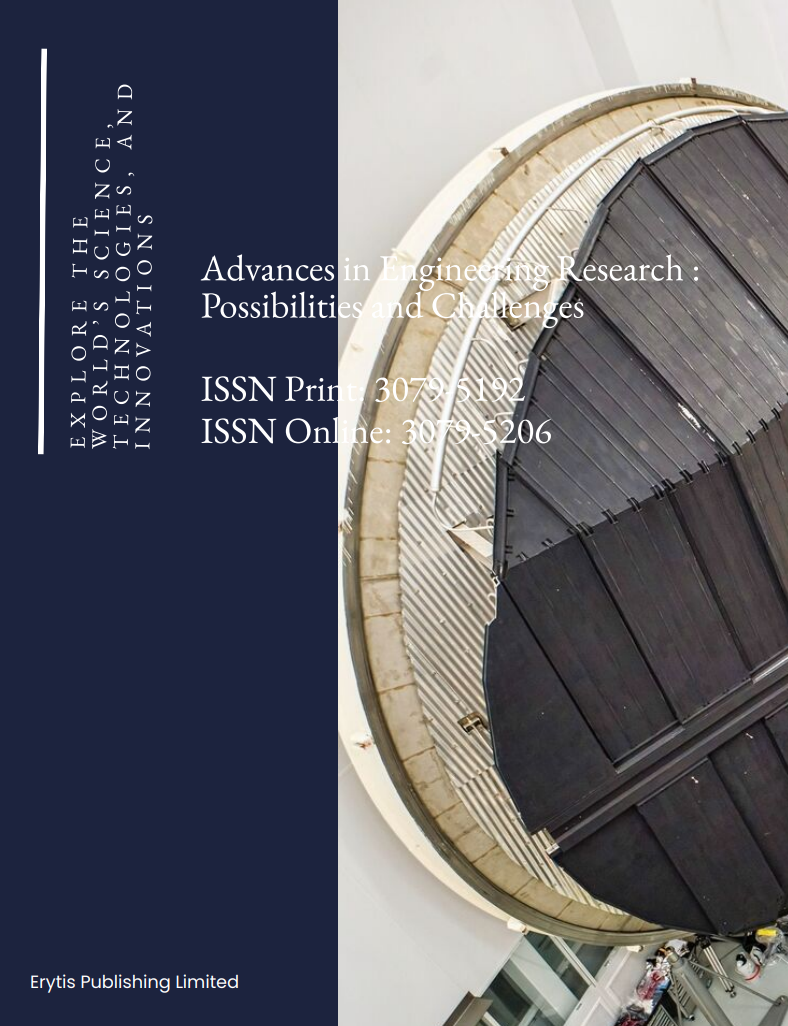Research on ultrasonic-based drilling fluid viscosity detection method
DOI:
https://doi.org/10.63313/AERpc.9012Keywords:
Ultrasound, Drilling Fluid, Viscosity, AttenuationAbstract
Drilling fluid viscosity directly affects the efficiency and safety of drilling op-erations. Proper viscosity can ensure that the drilling fluid can effectively carry drill cuttings and maintain the stability of the well wall. Therefore, real-time and accurate viscosity measurement of drilling fluid is crucial to ensure the safety of drilling operation and improve the production efficiency. The article proposes a method to measure the viscosity of drilling fluid based on ultrasonic attenuation method. Firstly, an experimental device for ultrasonic drilling fluid viscosity detection was designed and an experimental platform for ultrasonic drilling fluid viscosity detection was constructed. Secondly, the propagation and attenuation of ultrasonic waves in drilling fluids with different viscosities were investigated for different pipe diameters, and ultrasonic echo signals in drilling fluids were obtained. Finally, it is found that there are obvious correlations be-tween drilling fluid viscosity and four key parameters: temperature, pipe diam-eter, ultrasonic echo signal amplitude and ultrasonic attenuation coefficient. The experimental results show that the viscosity detection of drilling fluid can be realized by using the ultrasonic attenuation detection technique, and the ul-trasonic signals are analyzed using the support vector regression machine, which realizes accurate prediction of drilling fluid viscosity. It provides a new idea for drilling fluid viscosity detection.
References
[1] Bangtang Y, Yingsong L, Zhiyuan W. A gas kick early detection method outside riser based on Doppler ultrasonic. wave during deepwater drilling[J]. Petroleum Exploration and De-velopment, 2020, 47(04): 846-854.
[2] C J Pethick, D Pines, K F Quader. Thermal conduction contribution to the ultrasonic at-tenu-ation in solids[J]. Physics Letters A, 1987, 125(9): 485-488.
[3] George Gabriel Stokes, George Gabriel Stokes. On the Theories of the Internal Friction of Fluids in Motion, and of the Equilibrium and Motion of Elastic Solids[J]. Mathematical and Physical Papers, 1: 75-129.
[4] Hertz T G, Dymling S O, Lindstrom K. Viscosity measurement of an enclosed liquid using ultrasound[J]. Review of Scientific Instruments, 1991, 62(02): 457-462.
[5] Laux D, Valente M, Ferrandis J Y. Shear Viscosity Investigation on Mango Juice with High Frequency Longitudinal Ultrasonic Waves and Rotational Viscosimetry[J]. Food Bio-phys-ics, 2013, 08(04): 233-239.
[6] Mason W P, McSkimin H J. Measurement of Shear Elasticity and Viscosity of Liquids by Means of Ultrasonic Shear Waves[J]. The Journal of the Acoustical Society of America, 1949, 21(01): 58.
[7] NarasimhanV ,BeyerT R .Attenuation of Ultrasonic Waves of Finite Amplitude in Liq-uids[J].The Journal of the Acoustical Society of America,2005,28(6):1233.
[8] Prasad V S K, Balasubramaniam K, Kannan E. Viscosity measurements of melts at high temperatures using ultrasonic guided waves[J]. Journal of Materials Processing Tech-nol-ogy, 2008, 207(01): 315-320.
[9] Wang Y ,Song F ,Feng Q , et al.Basic Theory and Applications of Oil and Gas Pipeline Non-Destructive Testing Methods[J].Energies,2024,17(24):6366-6366.
[10] ZHOU Y .Advances on special structure drilling development techniques in Shengli Oil-field[J].Petroleum Exploration and Development Online,2008,35(3):318-329.
Downloads
Published
Issue
Section
License
Copyright (c) 2025 by author(s) and Erytis Publishing Limited.

This work is licensed under a Creative Commons Attribution 4.0 International License.















